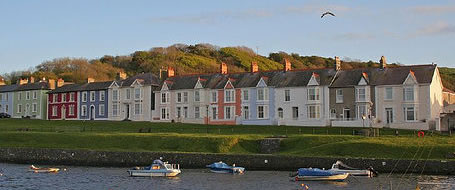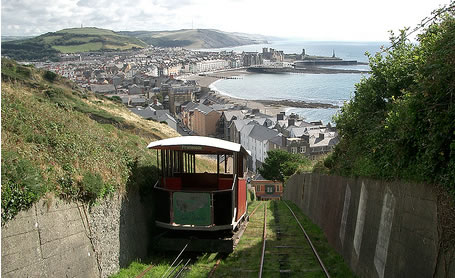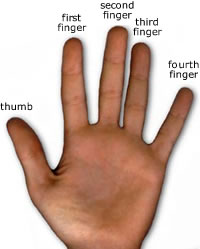As I have no classes this weekend, I decided to go to Aberystwyth today. The bus took about an hour and a half to get there and went through some nice scenery and some pretty villages and towns along the way. I particuarly liked Aberaeron, a small town by the sea with attractive Victorian houses painted in many different colours.

Er nad oedd dosbarthiadau heddiw, penderfynais i i fynd i Aberystwyth. Treuliodd y daith ar y bws tua awr a hanner ac aethon ni’n trwy gefngwlad hyfryd ac trwy nifer o drefi a phentrefi pert. Mae Aberaeron yn arbennig o ddeniadol, gyda llawer o dai Fictoraidd lliwgar.
In Aberystwyth I spent quite a bit of time wandering around the town and bought some Welsh CDs, a new Irish course, and another book of tin whistle tunes to add to my collection. There are some good bookshops in Aber, including one with French-Welsh and German-Welsh dictionaries, and courses for learning Breton and Irish through the medium of Welsh. They also had a Cornish course and dictionary.

Treuliais i maith o amser yn grwydro o gwmpas y dre a brynais i gryno ddisgiau gan Siân James, Gwenan Gibbard a Swci Boscawen, Cwrs Gwyddeleg newydd, a llyfr o diwniau ar gyfer y chwiban. Mae nifer o siopau llyfrau da yn Aber, yn gynnwys un sy’n gwerthu geiriaduron Cymraeg-Ffrangeg a Chymraeg-Almaeneg, a chyrsiau Llydaweg a Gwyddeleg trwy gyfryng y Gymraeg. Mae cwrs a geiriadur Cernyweg da nhw hefyd.
After having a look around the castle, I walked along the prom, and then went up Constitution Hill on the cliff railway. The views from the top were amazing – I could see more or less the whole of Cardigan Bay from the Llŷn Peninsula in the north to the Pembrokeshire Peninsula in the south. The sun even came out for a while and the clouds cleared making the view even better.

Ar ôl i mi gael cipolwg ar y castell, cerddais i ar hyd y promenâd ac es i i lân y Graiglais ar y rheilffordd y graig. Oedd y golygon i lawr y bryn yn ardderchog – o’n i’n gallu gweld Bae Ceredigion braidd i gyd o’r Llŷn yn y gogledd i’r penrhyn Sir Benfro yn y de. Disgleiriodd y haul am sbel a gwasgarodd y cymylau hefyd ac felly, oedd y golygon yn well.
On a semi-related matter, I received an email today from Steafan MacRisnidh, a speaker of Scottish Gaelic who is currently working in Japan. He has set up a new blog with some Gaelic lessons in Japanese. He also has a number of other blogs in Gaelic. Just though I’d mention it here.
As we usually have a quiz at the weekend, I don’t want to disappoint you today, so here it is:
Which of the following places is the odd one out?
Caerhirfryn, Caerliwelydd, Caerlŷr, Caernarfon, Caerfaddon, Caergrawnt, Caergaint, Caerwysg, Caerwrangon
 In Mandarin Chinese, the word 和 (hé) has a number of meanings. On it’s own it is usually means ‘and’, but also means harmony, peace, to be affable, the sum, and ‘of Japan’.
In Mandarin Chinese, the word 和 (hé) has a number of meanings. On it’s own it is usually means ‘and’, but also means harmony, peace, to be affable, the sum, and ‘of Japan’.




 As I’m sure many of you know, haiku (俳句) are short Japanese poems made of of 17 syllables usually in 3 lines of 5, 7 and 5 syllables. The only Japanese haiku I can remember is:
As I’m sure many of you know, haiku (俳句) are short Japanese poems made of of 17 syllables usually in 3 lines of 5, 7 and 5 syllables. The only Japanese haiku I can remember is: